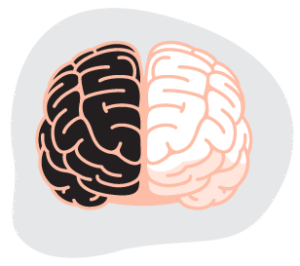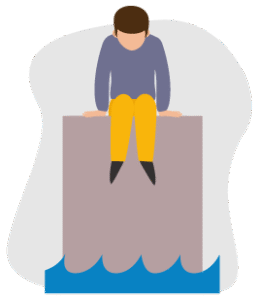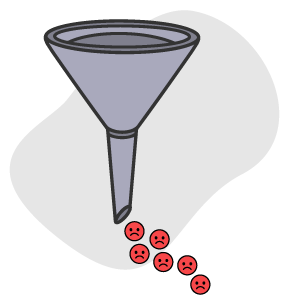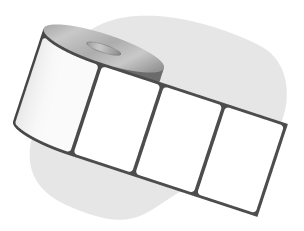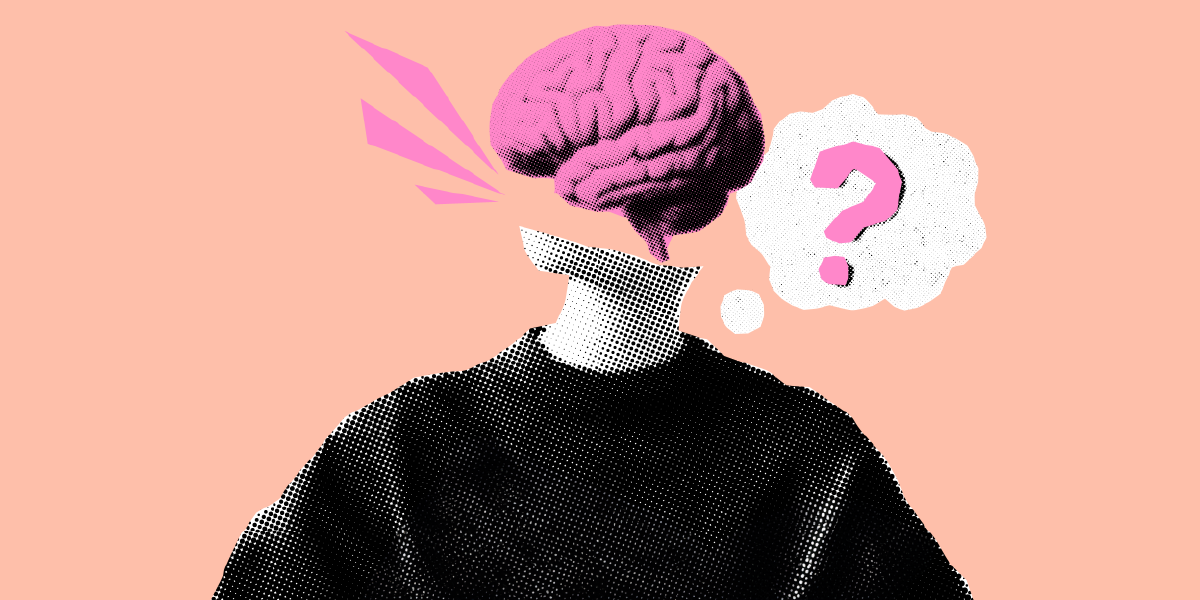
What if you discovered that your brain has been working against you most of your life?
That might sound like a scary idea, but there may be some truth to it.
Every day, you likely have certain thoughts that limit your potential and make you less happy than you could be.
Don’t worry—this doesn’t mean there’s anything wrong with you. This phenomenon is so common that psychologists have given it a term: “cognitive distortions.”
I prefer the term “thinking traps,” because that’s exactly what these thoughts are. They are habitual, sometimes subconscious thoughts that act as a trap to stop you from achieving your personal goals, taking calculated risks, or otherwise living your life to the fullest.
The good news is, you can unlearn cognitive distortions and break free from the traps—but it takes practice.
The first step is understanding what thinking traps are, so you can start recognizing them in yourself.
That’s why I put together this guide to thinking traps. Here you’ll find a full list of cognitive distortions, along with additional resources for deeper exploration. Finally, I’ll provide tips on how to start recognizing and countering thinking traps, so you can move forward without them.
What are thinking traps?
Thinking traps are automatic mental patterns that distort how we interpret situations, leading us to conclusions that aren’t based in reality.
They’re like cognitive shortcuts gone wrong—your brain trying to process information quickly but ending up with faulty results.
Cognitive distortion doesn’t include things like occasional pessimistic thoughts or bad moods. Thinking traps are systematic errors in reasoning that happen consistently across different areas of your life (work, school, relationships, etc.). When you’re caught in one, you genuinely believe your distorted interpretation is accurate, even when evidence suggests otherwise.
This is what makes thinking traps so tricky—they feel completely logical in the moment.
Your brain presents these thoughts as facts rather than interpretations. You might think “I’m terrible at presentations” after one awkward moment, and your mind treats this sweeping conclusion as an objective truth rather than an emotional overreaction.
What makes thinking traps particularly stubborn is that they often contain a grain of truth. Maybe you did stumble over your words during that presentation. But the trap takes that small reality and blows it wildly out of proportion, turning a minor mistake into evidence of complete incompetence.
Everyone falls into thinking traps sometimes, but they become problematic when they start influencing major decisions or consistently affecting your mood and self-perception. That’s when it’s necessary to start countering your cognitive distortions—but we’ll get to that.
Where do thinking traps come from?
There is no single root cause of cognitive thinking traps. Everyone experiences them differently, because we all have different backgrounds, experiences, genetics, and belief structures.
You don’t necessarily need to understand where your particular thought patterns originated to break free from thinking traps. But understanding general causes can make the journey easier.
Human evolution
Many thinking traps can be traced back to thought patterns that date back to our ancient ancestors. Though our times have changed a lot since the days when we were living in trees and hunting for survival, our brains haven’t fully caught up with modern life.
Back then, assuming the worst-case scenario could literally save your life. If you heard rustling in the bushes, it was better to assume it was a predator and run than to assume it was just the wind and get eaten. This hypervigilant mindset helped humans survive, but it also wired our brains to expect danger and catastrophe.
Similarly, our ancestors lived in small tribes where social rejection could mean death. Being cast out from the group left you vulnerable to starvation, predators, and harsh weather. This is why many thinking traps revolve around social fears—our brains still treat criticism or rejection as existential threats, even when the actual consequences are much less severe.
The problem is that these survival mechanisms fire constantly in modern life, even when there’s no real danger. Your brain treats that work presentation with the same alarm system it would use for a charging mastodon, leading to thinking patterns that are wildly disproportionate to the actual situation.
Psychological and neurological patterns
Your brain forms thinking patterns through repetition, much like building muscle memory. Every time you have a thought, your brain creates neural pathways that make it easier to think that same way again. Over time, these pathways become mental highways—your brain automatically takes the familiar route without questioning whether it’s the best one. (This is how we form habits.)
Genetics also play a role in how prone you are to certain thinking traps. Some people are naturally more anxious or sensitive to negative feedback, making them more susceptible to certain thinking traps. This doesn’t mean you’re doomed to these patterns, but it might explain why some thinking traps feel more compelling to you than others.
The adolescent and young adult brain is particularly vulnerable to thinking traps because the prefrontal cortex—the part responsible for rational decision-making—doesn’t fully develop until around age 25. This means you’re navigating major life decisions with a brain that’s still learning how to evaluate risks and rewards accurately. Good thing you’ve found this article now! (Sorry, that’s my sense of urgency kicking in. Damn these thinking traps!)
Social and cultural influences
The environment you grew up in teaches you which thoughts and beliefs are “normal.” If your family frequently catastrophized about money, school, or relationships, you likely absorbed those thinking patterns as standard ways of processing stress. These learned responses can persist long after you’ve left that environment.
Social media amplifies many thinking traps by creating a comparison culture that uses external validation to play into our brain’s worst habits. Platforms are designed to highlight extreme content—both positive and negative—which can distort your perception of what normal life looks like. Seeing everyone else’s highlight reels makes it easy to fall into thinking traps about your own worth or success.
Cultural messages about success, productivity, and achievement can fuel thinking traps like all-or-nothing reasoning or should statements. If you’ve been raised in an environment that emphasizes perfectionism or constant improvement, your brain might struggle to accept anything less than ideal outcomes.
Similarly, if you are part of a minority group, it’s likely you picked up on subtle (or not-so-subtle) messages from the larger culture about your worth and status in society. As a gay man, I know many of my cognitive distortions can be traced back to messages I got as a child about homosexuality being abnormal or “wrong.”
Traumatic or difficult experiences can also cement certain thinking patterns as protective mechanisms. If you experienced criticism, rejection, or instability growing up, your brain might default to defensive thinking traps as a way to avoid similar pain in the future.
Related: Ditch these unhealthy coping mechanisms
List of cognitive distortions and thinking traps
Now that we understand how cognitive thinking traps are formed, let’s look at some examples. Below is a list of common thinking traps, with examples and additional resources if you want to know more.
All or nothing thinking
Also known as black or white thinking, this thinking trap occurs when you only allow yourself to consider two extreme options, ignoring other outcomes that fall into a gray area.
For example, imagine you’re applying for a job you’re excited about, and you’re anxiously awaiting the answer. As you consider the outcomes, you see two paths: either you get the job, and you’re on the right career path, or you don’t get the job, and everything falls apart.
This kind of thinking doesn’t allow for the endless other possibilities. You could lose the job and be offered something better next week. You could get the job and hate it. You could discover a passion for acrobatics and join the circus. Sure, some scenarios are more likely than others—but the two extremes you’re considering are only two of many likely outcomes.
Black-and-white thinking also makes you divide people and situations into either “good” or “bad.” It can lead to you holding grudges or making judgement calls, which harms relationships and opportunities.
➡️ Learn more about all or nothing thinking.
Catastrophizing
Catastrophizing happens when your mind jumps straight to the worst possible outcome, no matter how unlikely it is. You take a minor problem and mentally escalate it into a complete disaster, often asking yourself “what if” questions that spiral into increasingly dramatic scenarios.
Maybe your boss wants to meet with you tomorrow, and instead of considering routine possibilities, your brain immediately goes to “I’m getting fired, I’ll lose my apartment, I’ll end up on the streets.”
Or you feel a headache coming on and convince yourself it’s a brain tumor. Catastrophizing takes normal concerns and amplifies them into existential crises.
This thinking trap is exhausting because you end up experiencing intense anxiety about events that haven’t happened and probably never will. You waste emotional energy preparing for disasters instead of dealing with actual problems that need your attention.
➡️ Learn more about catastrophizing.
Imposter syndrome
Imposter syndrome convinces you that your achievements are just luck, timing, or deception—that you’re fooling everyone around you and eventually they’ll discover you’re incompetent. Despite evidence of your skills and accomplishments, you feel like a fraud waiting to be exposed.
This thinking trap is particularly common during transitions like moving away from home, landing your first job, or getting promoted. You might dismiss positive feedback as people being “nice” while treating any criticism as proof that you don’t belong. Even when you succeed, imposter syndrome explains it away rather than letting you take credit.
The cruel irony is that imposter syndrome often affects people who are actually quite capable. The more you care about doing well, the more likely you are to question whether you deserve your position. It creates a cycle where success feels hollow because you can’t truly own your achievements.
➡️ Learn more about imposter syndrome.
Fortune telling
Fortune telling involves predicting negative outcomes with absolute certainty, as if you have a crystal ball showing you the future. 🔮 You don’t just worry about what might happen—you convince yourself you know exactly how things will unfold, and it’s always bad.
Walking into a party, you might think “Nobody will want to talk to me, I’ll stand alone all night, and everyone will think I’m weird.” Before a presentation, you decide “I’m going to mess up, forget everything, and embarrass myself in front of my boss.”
If you convince yourself these things are true, you probably won’t go to the party or will get so nervous you mess up the presentation anywhere. Ironically, your fortune telling can become a self-fulfilling prophecy.
Overgeneralization
Overgeneralization takes one negative experience and turns it into a universal rule about how things always work. You use words like “always,” “never,” “everyone,” and “nobody” to describe patterns based on limited evidence. A single rejection becomes proof that you’ll never find love, or one failed project means you’re terrible at your job.
Related: How to cope with rejection
After getting turned down for a date, you might conclude “I’m always going to be single” or “Nobody finds me attractive.” If you struggle with a math class, overgeneralization tells you “I’m just not a math person” rather than recognizing that one challenging course doesn’t define your entire relationship with numbers.
Overgeneralization prevents you from trying again because it convinces you that past failures predict future outcomes. This makes it harder to learn from mistakes or recognize when circumstances have changed.
Personalization
Ah, my personal nemesis, personalization.
Personalization makes you the center of every negative situation, even when you have little or no control over what happened. You automatically assume that bad outcomes are your fault or that other people’s moods and behaviors are reactions to something you did wrong.
Maybe you notice your friend is quiet during lunch. You immediately decide that they’re mad at you, instead of considering the many other factors (stress, fatigue, introspection, a sore throat, etc.) that could cause your friend to be more quiet than usual.
When you fall into the personalization thinking trap, you end up taking responsibility for everyone else’s feelings and every negative outcome. That leads to a lot of guilt and anxiety for things that actually have nothing to do with you. And as a double-whammy, it also causes you to overlook the real causes of problems.
Should statements
“I shouldn’t have that cookie…”
“I really should be working harder…”
“They should recognize everything I’ve done…”
How often does your brain tell you what you should be doing right now? Once you start to listen for this word, or its cousins must, have to, ought to, and need to, you might notice that it has a lot of control over what you do.
This cognitive distortion isn’t exclusively targeted inward. If a friend cancels plans, should statements kick in: “They should have given me more notice” or “Good friends shouldn’t flake like that.” These rules feel reasonable, but they’re often unrealistic and inflexible.
Should statements set you up for disappointment because they don’t account for human limitations, changing circumstances, or different priorities. They turn normal challenges into moral failures and make it impossible to accept imperfection in yourself and others.
And if you’re like me, you spend a lot more time thinking about what you should be doing than what you want to do. And that’s no way to live life!
➡️ Learn more about should statements.
Emotional reasoning
Your feelings are real, but they’re not always accurate reporters of what’s actually happening around you.
Emotional reasoning happens when you use your emotions as evidence for how things really are. If you feel stupid, you must be stupid. If you feel like everyone hates you, then everyone probably does hate you. If you feel overwhelmed, the situation must actually be impossible to handle.
Of course, feeling something doesn’t make it so. Emotions are influenced by all sorts of factors that have nothing to do with reality—your blood sugar, how much sleep you got, what happened earlier in the day, or even the weather. You might feel anxious about a presentation because you’re hungry, not because you’re “just bad at presentations.”
This thinking trap is especially sneaky because emotions feel so convincing in the moment. Your racing heart and sweaty palms during a job interview seem like clear evidence that you’re not qualified, when really they just mean your nervous system is doing what nervous systems do in high-stakes situations.
Filtering
Picture this: You give a presentation at a conference. Twenty people tell you it was great, insightful, and well-delivered. One person mentions that you spoke a little quickly in the middle section.
Which feedback do you remember three days later?
Mental filtering is like having a highlight reel that only shows the lowlights. Your brain becomes a selective editor, cutting out positive information and zooming in exclusively on negatives, criticisms, and problems.
Filtering doesn’t just affect how you process feedback. You might scan a party and immediately notice the one person who looks bored, ignoring the dozen people who seem to be having a great time. Or you focus on the one thing that went wrong during your vacation while forgetting all the amazing experiences you had.
Labeling
Instead of describing what happened, labeling jumps straight to defining who you are based on your actions. You don’t just make a mistake—you’re “an idiot.” You don’t struggle with a task—you’re “incompetent.” You don’t have a disagreement with someone—you’re “difficult.”
This thinking trap is like slapping permanent name tags on yourself and others based on temporary situations. Forget someone’s birthday? You’re “a terrible friend.” Get nervous during a presentation? You’re “not leadership material.” Have trouble understanding a concept in class? You’re “not smart enough for college.”
The labels feel definitive and unchangeable, which is exactly what makes them so damaging. They turn specific behaviors into fixed identities, making it harder to learn, grow, or see yourself (and others) as complex, evolving humans who are capable of change.
Sense of urgency
You won’t find this on other lists of thinking traps, because I only recently named this one after picking up on it in myself.
I often slap a sense of urgency onto a situation that really doesn’t call for one. I do it for everything, from dating to my career to my hobbies.
For example, if I’m going on a date, I’ll find myself rushing to make a decision on whether it was a good or bad date even before it’s over.
If I come up with an idea for a business, I start panicking that if I don’t leap on the opportunity now, it will be gone tomorrow (even though I only just thought of it).
Some part of my brain believes that my time in most situations is limited. But the reality is, I’ve got plenty of time to consider how I felt about a date, or whether I really want to launch a new business—as it turns out, few decisions in life really have to be rushed.
How to escape thinking traps
It might feel like there’s no escape from cognitive distortion, but trust me—you can get much better at avoiding all of these thinking traps with some practice and intention.
Generally, the process of overcoming thinking traps involves three stages.
Stage 1: Recognize the thinking trap
The first stage is perhaps the hardest one. You have to start noticing the thinking traps in your day to day life. This can be very difficult, since you may have been falling into some of these traps for years and years!
There are certain activities you can do that help you notice cognitive distortions in your own day to day life. Keeping a journal, working with a mental health counsellor, meditation, and other mindfulness practices are all ways to help you start clocking thinking traps as they are happening.
Stage 2: Pause and “break” the thinking trap
Once you start noticing the negative thought patterns that lead to thinking traps, your next step is to hit the pause button. Then, you want to help your brain readjust those neural pathways by doing something to change your thought pattern.
For example, maybe you find yourself catastrophizing as you’re commuting to work, thinking about everything you have to do today. Before you were able to notice that thinking trap, you probably would have continued to catastrophize all the way to the office.
Now, you can hit pause and do something to break the pattern. Maybe you turn up your music and sing a happy song at the top of your lungs. Maybe you call a friend and chat about their day. Maybe you just say to yourself, “Let’s think about something else,” and choose a new topic. The key is to stop the thought before it goes too far.
Stage 3: Reframe the thinking trap
As you build some space between yourself and your own cognitive distortions, you will be able to start reframing your thinking traps into something more useful.
For example, because I’m partial to “should” statements, I often hit pause when I hear that word in my mind, and change it to “want.” Instead of, “I should go to the gym today so I don’t gain weight,” it becomes, “I want to go to the gym today, to boost my mood and improve my health.”
If you find yourself fortune-telling about the outcome of a challenging college course, you might reframe “I’m going to flunk this course and have to drop out of university” into “I’m struggling in this course, but I’ve still got plenty of time before the semester’s over to get back on track.”
⚠️ Full Disclosure: When you first start doing this, it’s going to feel a heck of a lot like you’re lying to yourself. That’s ok—do it anyway. You have been telling yourself one thing your entire life, and it’s going to take practice and repetition before you retrain your brain to do all of this reframing on its own.
Thinking traps can be so hard to spot, but once you start to recognize them, you’re putting yourself on a path toward success and happiness. Take a look back through this list of cognitive distortions, and dive into the resources we’ve provided for further reading. With enough practice and patience, you can reduce the time you spend stuck in thinking traps.


